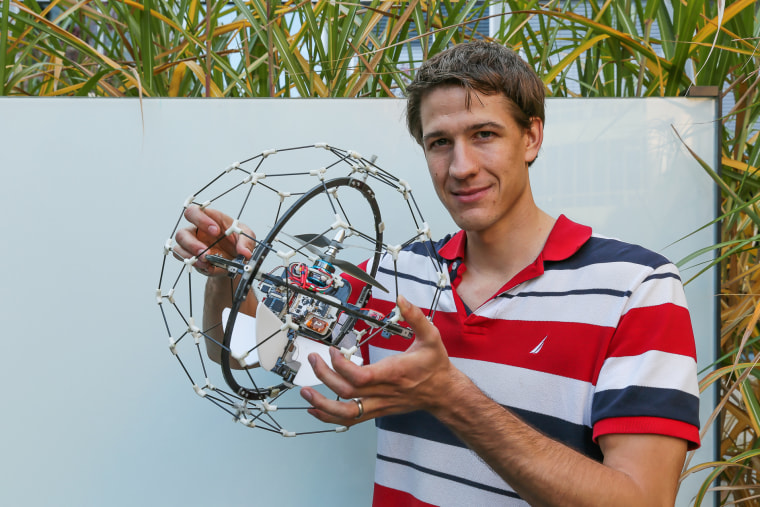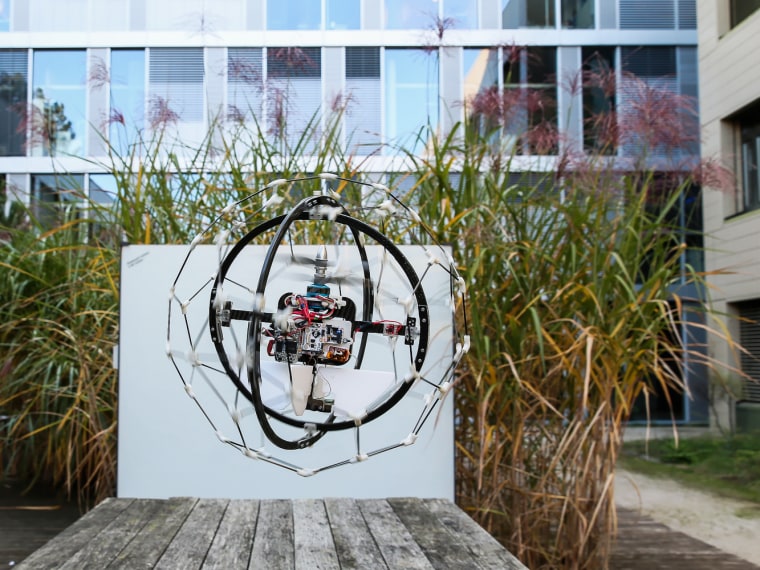A flying bug figures out that there's a pane of window glass in its path when it runs into it: Bzzzt ... WHAP. A new flying robot called Gimball is built to use the same technique — crashing into obstacles and bouncing off them — to fly through a crowded, hard-to-maneuver space.
"We can imagine it finding its way through a building, hitting obstacles and following a wall until it finds the door," Adrien Briod, a member of the team that built the bot, told NBC News.
The long-term goal is to design a rescue bot that learns from stumbles and bumps and navigates through tight spaces without expensive on-board sensors. "But right now it’s only flying straight," said Briod, who is a graduate student at the Laboratory of Intelligent Systems, at EPFL in Lausanne, Switzerland.
The "brains" of the flying robot — an accelerometer and gyroscope to keep track of how fast it's flying and what orientation — are suspended at the center of a football-shaped rotating cage. The frame is made of 60 connectors and 90 rods that form interconnected hexagons and pentagons. Altogether, the bot weighs just 370 grams (13 ounces).

The robot flew about 150 meters through a forest, lightly bouncing off tree trunks and branches — you can see a snatch of that obstacle course in the video above. It flew autonomously, following instructions to follow one direction on a magnetic compass. "We can tell it to fly north and it will fly north," Briod said.
Briod says the crash-and-fly principle won't protect larger, heavier crafts like a helicopter. In fact, the plan is to shrink the robot because "the smaller it is, the more likely it is to survive a collision," he said. Also, because the holes in the frame are so wide, the Gimball risks getting tangled in branches. A smaller bot could avoid that problem too.
Briod and his colleagues will demo the robot for the first time at the International International Conference on Intelligent Robots and Systems in Toyko next week.
Nidhi Subbaraman writes about science and technology. You can follow her on Facebook, Twitter and Google+.
